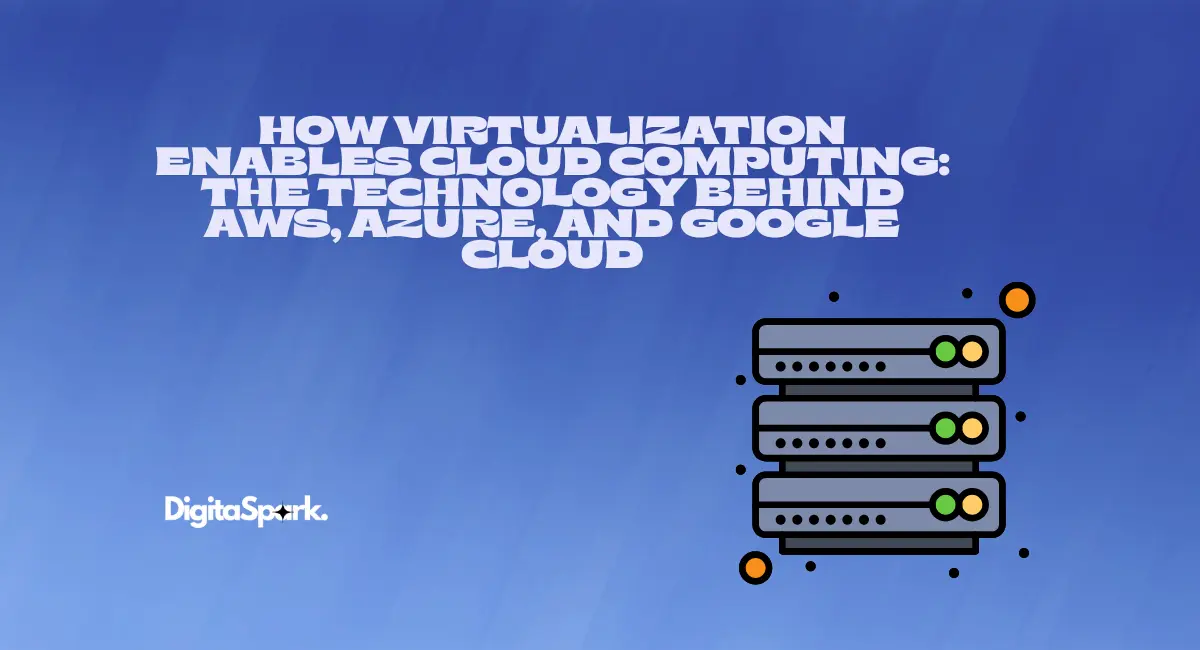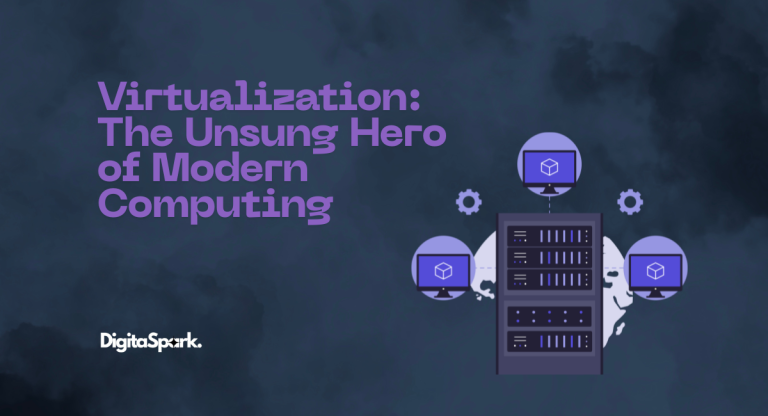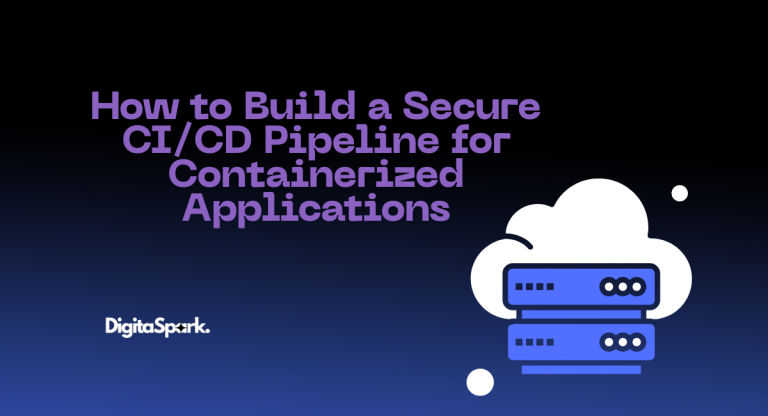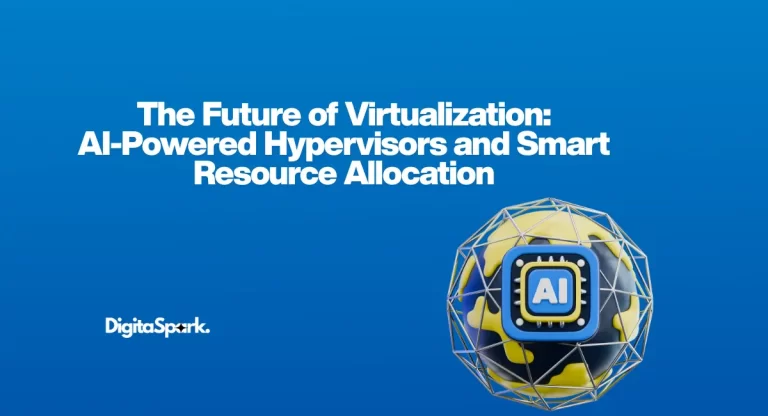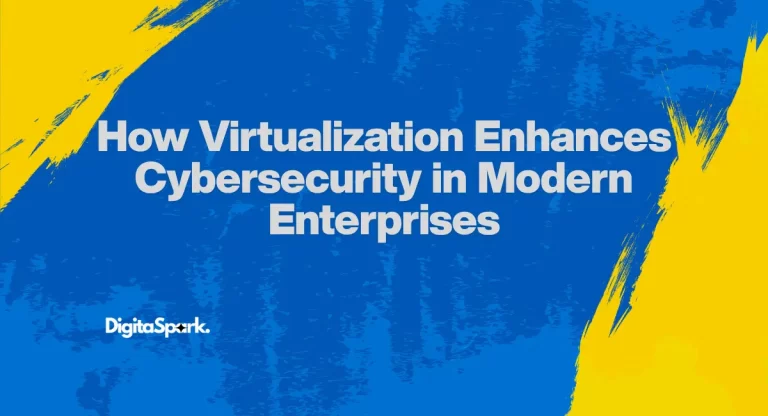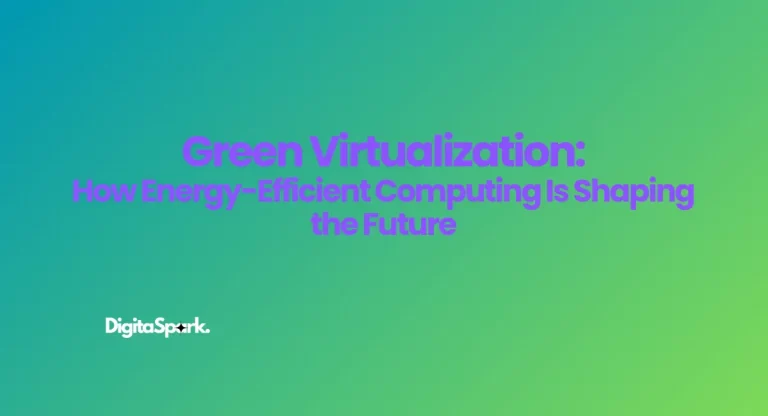How Virtualization Enables Cloud Computing: The Technology Behind AWS, Azure, and Google Cloud
If you’ve ever spun up a cloud server in under a minute and thought, “wow, that was fast,” you probably didn’t stop to wonder what’s happening behind the scenes. After all, to most of us, AWS or Google Cloud just feels like magic. Click a button, and bam — you’ve got a server, a database, or even a Kubernetes cluster ready to roll.
But here’s the thing: none of that magic exists without virtualization. It’s the unsung hero that quietly makes cloud computing possible. Without it, Amazon, Microsoft, and Google would basically be renting you out entire physical machines like they did in the old data center days — slow, expensive, and painfully rigid.
Virtualization flips the game. It slices up big, powerful servers into smaller, flexible chunks that anyone can rent on demand. That’s why a startup in Karachi can run workloads on the same infrastructure as Netflix or NASA, paying only for what they use. Pretty wild, right?
So let’s break it down. We’ll look at what virtualization really is, why it’s the backbone of the cloud, how AWS, Azure, and Google Cloud actually use it, and where it’s all headed.
Life Before Virtualization: The Painful Old Days
Back in the early 2000s, if your company needed a new server, here’s what happened: someone from IT would order hardware, wait weeks for delivery, rack it in a data center, install the OS, patch it, and pray nothing broke. If you underestimated your needs, well, tough luck. If you overestimated, you’d have a $20,000 box sitting half-empty.
Worse yet, most of those servers only used about 10–20% of their capacity. The rest? Wasted. Imagine buying a truck and only ever using the backseat while the rest sits idle. That’s what data centers looked like before virtualization came to the rescue.
Virtualization 101: One Computer Pretending to Be Many
So, what’s virtualization? Think of a huge, powerful machine in a data center. Normally, you’d slap one OS on it and call it a day. But with virtualization, a thin layer of software called a hypervisor sits on top of the hardware. Its job? To trick the server into thinking it’s running lots of smaller, independent computers.
These smaller units are called virtual machines (VMs). Each VM gets its own slice of CPU, memory, storage, and network. To the VM, it feels like a real computer. To the hypervisor, it’s just juggling resources.
That simple idea — dividing one machine into many — is the bedrock of cloud computing. Instead of renting out whole servers, cloud providers can carve them up and rent tiny pieces to thousands of customers at once.
Why Virtualization and Cloud Go Hand in Hand
Cloud computing isn’t just about speed. It’s about efficiency, flexibility, and scale. And virtualization gives you all three:
- Better resource usage: Instead of wasting 80% of server power, hypervisors squeeze out every bit.
- On-demand scaling: Need a new server? Virtualization spins one up in seconds. No shipping delays. No waiting for IT to rack gear.
- Isolation: Your VM is protected from the noisy neighbor running crypto miners on the same host. At least in theory.
- Cost efficiency: Pay for a slice instead of the whole pizza.
Without virtualization, AWS wouldn’t be able to offer $5-a-month servers, and Google Cloud couldn’t run Gmail for billions of people across shared infrastructure.
AWS: The EC2 Powerhouse
Amazon was the first big player to show the world what virtualization could really do. Back in 2006, AWS launched EC2 (Elastic Compute Cloud), and suddenly developers could rent VMs by the hour. It was revolutionary.
At the core, AWS relied on the Xen hypervisor, an open-source project. Later, they built their own tech called Nitro, which is basically a combination of lightweight virtualization and custom hardware cards that offload networking and storage. Nitro gave AWS faster, more secure VMs with less overhead.
Today, when you spin up an EC2 instance, you’re not getting a whole server. You’re getting a VM carved out by Nitro, backed by physical servers sitting in Amazon’s massive data centers.
Microsoft Azure: Built on Hyper-V
Microsoft wasn’t about to let Amazon eat their lunch. They leaned on their own in-house virtualization stack: Hyper-V. If you’ve ever used Windows Server in an enterprise, you’ve probably bumped into it.
Azure uses Hyper-V to power its virtual machines, but it’s also evolved. They now mix in containers, Kubernetes, and other layers of abstraction. Still, at the heart of every Azure VM is Hyper-V slicing up a physical server into multiple tenants.
What’s neat is how Microsoft tied this back into its Windows ecosystem. For companies already deep in Microsoft products, moving workloads to Azure felt like a natural step — thanks to virtualization.
Google Cloud: KVM and Containers Everywhere
Google took a slightly different path. Their cloud runs heavily on KVM (Kernel-based Virtual Machine), a virtualization technology built directly into the Linux kernel.
But here’s the kicker: Google is also the birthplace of containers. They built Borg (an internal container orchestration system), which later inspired Kubernetes. So while VMs are still the foundation, Google pushed the industry toward lightweight virtualization — containers — for even greater density and speed.
When you run something on Google Cloud, chances are there’s a VM underneath powered by KVM, but containers are increasingly taking the spotlight.
Containers: Virtualization’s Cool Younger Sibling
VMs changed the world, but containers made things even more interesting. Instead of virtualizing the whole machine, containers virtualize just the operating system layer.
That means you can run dozens, even hundreds, of containers on a single VM without the heavy overhead. For developers, this translates to faster deployments, smaller images, and fewer “it works on my machine” headaches.
Docker popularized containers, and Kubernetes made them production-grade. But let’s be clear: containers still run on top of VMs. Virtualization is the bedrock, containers are the house.
Serverless and MicroVMs: The Next Wave
You’ve probably heard the hype around serverless computing — AWS Lambda, Google Cloud Functions, Azure Functions. Spin up code without worrying about servers at all. But under the hood? Yep, virtualization again.
Most serverless platforms run on tiny VMs called microVMs. AWS Firecracker is a good example: it’s like a stripped-down VM designed to start in milliseconds. That’s how Lambda functions scale instantly while still giving each workload isolation.
So even when you think servers are “gone,” virtualization is still working quietly in the background.
The Upsides and the Trade-Offs
Let’s be honest: virtualization isn’t perfect. It gives us flexibility, but it also introduces complexity.
The Good:
- Massive efficiency gains
- Easy scaling
- Stronger isolation than bare metal sharing
- The backbone of multi-tenant clouds
The Pain Points:
- Overhead: VMs aren’t as fast as bare metal.
- Complexity: Hypervisors, images, networking layers — it’s a lot to manage.
- Security: Shared environments mean more attack surfaces. A single hypervisor bug can ripple across tenants.
This is why cloud providers constantly tweak and reinvent virtualization tech. Nitro, KVM improvements, microVMs — it’s all about reducing overhead and plugging holes.
The Bigger Picture: Virtualization as the Cloud’s Foundation
Here’s the takeaway: without virtualization, cloud computing simply wouldn’t exist in the form we know it today.
AWS wouldn’t have EC2. Azure wouldn’t run VMs. Google Cloud wouldn’t have Kubernetes without its KVM-powered infrastructure. And all those SaaS tools, from Slack to Netflix, would still be buying physical servers like it’s 2002.
Virtualization turned computing into a utility — as easy to tap into as electricity or water. That shift reshaped the entire tech industry.
Looking Ahead
So, where does this go next? Expect more microVMs, faster startup times, and even tighter integration with hardware. Hybrid cloud setups will continue to blur the line between on-prem and public cloud. And containers? They’ll keep dominating, but always standing on the shoulders of virtualization.
The funny thing is, end-users will never see any of this. They’ll just keep clicking buttons on AWS or Azure dashboards while virtualization quietly does the heavy lifting behind the curtain.
Final Thoughts
Virtualization may not sound sexy, but it’s the quiet backbone of modern computing. Without it, the cloud revolution wouldn’t have happened. And as AWS, Azure, and Google keep pushing boundaries, virtualization will keep evolving in the background — invisible, essential, and unstoppable.

